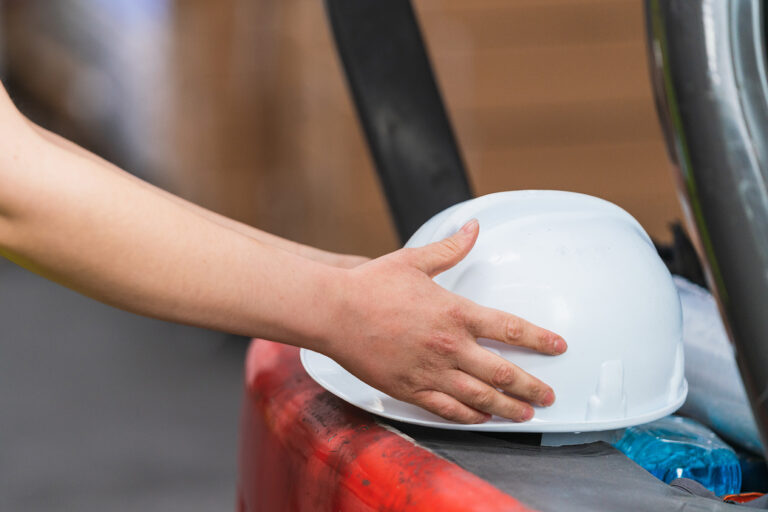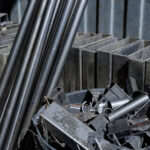In the metal manufacturing and processing industry, safety is paramount. The handling of different types of metals, each with its unique properties and potential hazards, requires a comprehensive understanding of safety protocols. For Pride Metals, ensuring a safe working environment is not just a regulatory requirement but a commitment to the well-being of our employees and clients. This blog post outlines the best practices in metal manufacturing and handling, focusing on how to manage risks effectively and maintain a safe workplace.
Understanding the Risks in Metal Manufacturing
Identifying Potential Hazards
The first step in ensuring safety is to identify potential hazards in metal manufacturing. These can include exposure to high temperatures, sharp edges, heavy materials, and hazardous chemicals.
Risk Assessment
Conducting regular risk assessments helps in identifying and mitigating potential dangers in the workplace. This process involves evaluating the likelihood and severity of risks and implementing measures to minimize them.
Safety Gear and Personal Protective Equipment (PPE)
Essential Safety Gear
The use of appropriate safety gear is crucial. This includes protective clothing, gloves, eye protection, and helmets. Specialized PPE may be required for handling certain metals or performing specific tasks.
Regular Maintenance and Inspection
Ensuring that all safety gear is regularly maintained and inspected is vital for it to function effectively. Damaged or defective equipment should be replaced immediately.
Safe Handling of Different Types of Metals
Understanding Metal Properties
Different metals have different properties that can pose various risks. For example, some metals may emit hazardous fumes when heated, while others might be particularly sharp or heavy.
Training in Metal Handling
Employees should receive thorough training in handling different types of metals safely. This includes understanding the physical and chemical properties of metals and the appropriate handling techniques.
Maintaining a Safe Working Environment
Cleanliness and Organization
A clean and well-organized workplace is essential for safety. Regular housekeeping can prevent accidents such as tripping or falling over materials and equipment.
Proper Ventilation
Good ventilation is crucial, especially in processes that involve heating or welding metals, to avoid the accumulation of harmful fumes.
Safe Machinery Operation
Training and Certification
Operators of machinery should be properly trained and certified. Understanding how to operate machines safely is key to preventing accidents.
Regular Maintenance
Regular maintenance and inspection of machinery ensure that they are in good working condition, reducing the risk of malfunctions that could lead to accidents.
Emergency Preparedness and Response
Emergency Protocols
Having clear emergency protocols in place is essential. This includes procedures for handling accidents, fires, chemical spills, and other emergencies.
First Aid and Medical Facilities
Ensuring easy access to first aid and medical facilities is crucial. Employees should be trained in basic first aid, and emergency contact numbers should be readily available.
Implementing a Safety Culture
Regular Training and Awareness Programs
Regular safety training and awareness programs help inculcate a culture of safety among employees. These programs should cover various aspects of workplace safety, including emergency response and the correct use of PPE.
Encouraging Reporting of Hazards
Creating an environment where employees feel comfortable reporting potential hazards can significantly enhance workplace safety. Prompt action should be taken to address reported issues.
Compliance with Regulations and Standards
Adhering to Safety Standards
Compliance with national and international safety standards and regulations is non-negotiable. Regular audits and inspections can help ensure adherence to these standards.
Continuous Improvement
The field of safety is ever-evolving. Staying updated with the latest safety trends, technologies, and regulations is crucial for continuous improvement.
Safety in Metal Transportation and Storage
Secure Transportation
Transporting metals requires careful planning to ensure they are securely loaded and unloaded. The use of appropriate lifting equipment and techniques is essential.
Safe Storage Practices
Safe storage practices include proper labeling, using appropriate storage containers, and ensuring that heavy items are stored securely to prevent accidents.
Pride Metals: Commitment to Safety
Our Safety Philosophy
At Pride Metals, safety is at the core of our operations. We are committed to maintaining the highest safety standards in every aspect of our business.
Ongoing Safety Initiatives
We continuously invest in safety training, equipment, and facilities to ensure a safe working environment for our employees and clients.
Safety in metal manufacturing and handling is a multifaceted issue that requires a proactive and comprehensive approach. By understanding the risks, implementing best practices, and fostering a culture of safety, we can significantly reduce the likelihood of accidents and injuries. At Pride Metals, we are dedicated to upholding these standards, ensuring that safety remains our top priority in all our operations.







